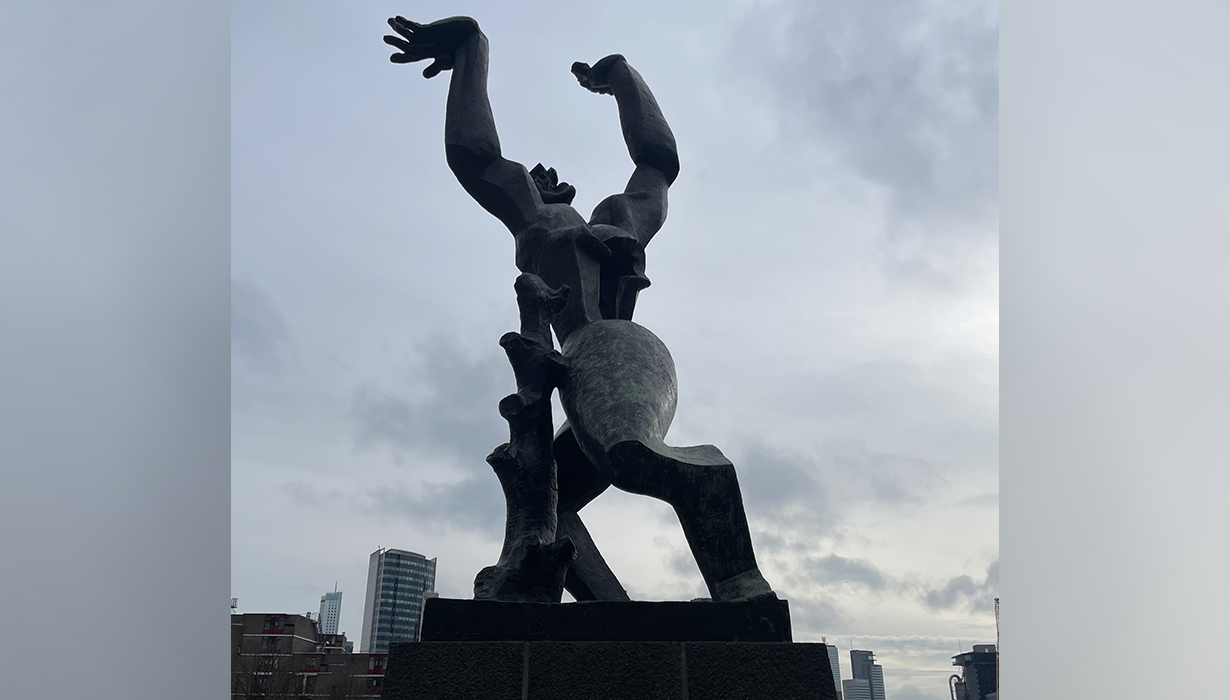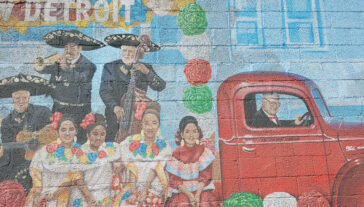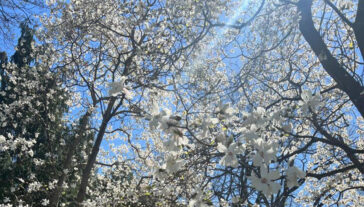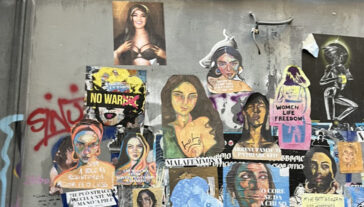SAB Goes Abroad: Rotterdam’s Destroyed City Memorial

This semester I have the privilege of studying abroad for the winter semester in Amsterdam! As a loyal SAB member, I am confined to participating through blog posts. To start my blogging career off strong, I will dive into some history of Rotterdam’s Destroyed City Memorial, a massive sculpture I had the opportunity to visit.
The Destroyed City, known by the locals as “Zadkini”, but primarily as “De Verwoeste Stad” is a 21ft high bronze sculpture created by the French artist Ossip Zadkine. The towering dark sculpture paints a man in severe anguish, leaning against a tree stump with his mouth open as if he is screaming up into the sky. The expression that paints his face as his head tilts up in sadness mirrors such intense human emotion and misery that it has been compared to the painted suffering in Picasso’s Guernica. His arms follow his gaze, both raised to the clouds with palms up and fingers outstretched. The most stunning yet wrenching part of this art is the hollow space in his chest, alluding to the reality that the Germans had devastated and destroyed the heart of Rotterdam, hence another common nickname: “Stad zonder Hart”, or “A City Without a Heart”.
Created in 1951 and finished in 1953, the sculpture was unveiled in memory of the 1940 German bombing of the city which claimed the lives of 900 civilians and effectively destroyed the city of Rotterdam, leaving over 50,000 civilians homeless. After devastating the city, Nazi Germany threatened another aerial bombing and proceeded to occupy the Netherlands, establishing a Nazi regime that remained until 1945. While occupying the Netherlands, atrocious acts were committed against the Jewish population, and by the end of the war, only a quarter of Dutch Jews remained alive. This monument today serves to preserve a dark memory of the destruction of Rotterdam, and more generally, stands as a commemoration of the atrocities inflicted upon the Dutch Jews under the Nazi regime. Through the decades, Rotterdam has been rebuilt and now serves as a symbol of resilience and innovation in the Netherlands. But while the sculpture now stands surrounded by a vibrant city and beautiful harbor, the space it holds has not lost its gravity, and Dutch grief will forever be locked in the contorted face of Zadkine’s creation.
To understand further Zadkine’s sentiments and inspiration, I wanted to provide his own words:
“In October 1945 I returned from America, where I had stayed during the war. I arrived in Le Havre, full of ruins, a carcass of a city. It took one night to reach Paris on a train with no windows. That night I got the idea for the monument. I sketched it on paper and forgot about it, until I visited Rotterdam for the first time in 1947. I saw a city without a heart. I saw a crater in the body of a city. And I remembered that night, the sketches. I made a small terracotta model and sent it to an exhibition of French art in Germany. ” — Ossip Zadkine, het Vrije Volk newspaper 4 July 1950
More From UMMA


